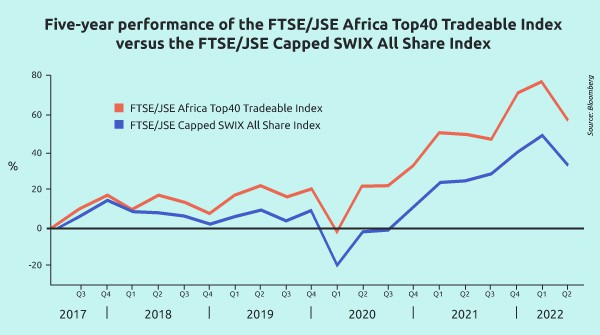Ryan Basdeo, 1nvest head of index portfolio management
Occasionally we hear people discussing index tracking as if it is a vanilla approach to investing. There seems to be an assumption in some circles that because we often describe exchange traded funds as “simple”, that means they are easy or boring. And that there are minimal differences between different ETFs. As fund managers, we tend to see it slightly differently.
Yes, ETFs are relatively simple. By that we mean that once they are constructed, the investor can see precisely what investments are in the product and easily monitor the value of the investment as it trades. The risks you are exposed to are well understood, too. It is thoroughly regulated and reporting is crystal clear. In short, the technical complexity is taken care of by the management company.
So, yes, index funds are simple in that they do what it says on the packaging. But that is only part of the story. There remain difficult decisions to be made for the management company, the financial advisor, and the individual investor.
For starters, there is a large array of ETFs to choose from. That is a good thing, in that you have options. It also means there is work to be done to decide what is right for the individual.
ETFs come in many flavours. Sometimes the differences are obvious. For example, an ETF that holds South Africa’s largest equities is vastly different to one holding American debt. Sometimes the difference is easy to miss. For example, two equity funds on the same stock exchange might hold companies of different sizes. Depending on market conditions, the performance difference between those two could be significant. Consider that holding an index of large cap shares on the Johannesburg Stock Exchange (JSE) over the last five years has performed 24% better than holding an index of small- and medium-sized shares. The devil is in the details.
Why the difference between portfolios of varying sizes, even though they trade in the same place? In short, the larger caps have more exposure to materials and the smaller caps have more exposure to financials.
"Two ETFs that may appear very similar to the untrained eye can provide very different results. The materials-heavy FTSE/JSE Africa Top40 Tradeable Index outperformed the financials-heavy FTSE/JSE Capped SWIX All Share Index by 24% over the last five years."
This speaks to another arena that needs attention when investing in ETFs: macroeconomic cycles. Given that ETFs are best suited to a long-term investment horizon, the cycles are of great relevance. Ideally an advisor will work with an investor to design a portfolio that targets goals over multiple business cycles.
That doesn’t mean that timing the market is the answer. The typical approach with ETFs is to understand the cycles and ensure the portfolio and time horizon are crafted accordingly. As with the above example, the financial advisor should have a grasp of where the commodities cycle is relative to the financial sector cycle. Then, based on the individual’s goals, risk appetite, time horizon and more, put together a suitable portfolio and strategy.
The subtleties don’t end there. There is even nuance within sectors. One might think that one index that tracks financial companies is the same as the next. But we have to look closer. Is the index heavy on banks or insurance? Again, that matters because there are performance differences that depend on economic cycles.
The point is that, while ETFs are designed to manage risk and exclude some of the complexity that other investing vehicles must embrace, the desired outcome of a transparent, versatile, inexpensive investing tool comes about as a result of hard work and acumen.
This is all to say that ETFs are both simple and complex. Fortunately for the client, the fund manager takes care of a great deal of the complexity. When this is done well, the financial advisor and the client have the tools, clarity and confidence in the investment products to make sound decisions.







